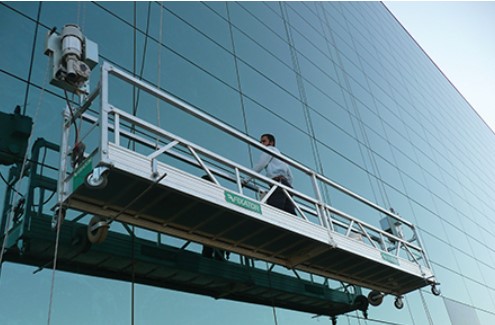The healthcare field is rapidly evolving, with the emergence of technologies and practices aimed at improving care and streamlining operations. One notable advancement that is gaining popularity is the utilization of scribes. This article delves into scribes’ importance, advantages, and how they shape modern healthcare practices.
Understanding Remote Medical Scribes
To comprehend the trajectory of medical scribing, it’s crucial to understand the responsibilities associated with this role. A remote medical scribe, or a scribe or telehealth scribe, is a skilled professional who aids healthcare providers in recording patient interactions and managing electronic health records (EHRs) from a distance. By doing this, physicians can dedicate attention to patient well-being while alleviating administrative tasks.
Remote medical scribes typically operate from their homes or designated offices. They utilize video conferencing and screen-sharing tools to collaborate with healthcare professionals and document information. These experts possess knowledge of terminology and documentation procedures, making them indispensable members of healthcare teams.
The Ascendancy of Remote Medical Scribing
While not a novel concept, the demand for scribing has recently surged. The emergence of telehealth and care has increased the demand for support in healthcare documentation. Factors such as physician burnout, the shortage of healthcare professionals, and the ongoing impact of the COVID-19 pandemic have all contributed to the adoption of medical scribing.
Introduction to Remote Medical Scribing
Remote scribing involves professionals who aid healthcare providers in documenting patient encounters from a distant location. These scribes ensure that medical records are accurate and timely, allowing physicians to dedicate attention to patient care. By managing the documentation responsibilities, remote medical scribes empower healthcare professionals to uphold records without compromising quality care.
Advantages of Remote Medical Scribing
Efficiency in Documentation
An advantage of medical scribing is its ability to streamline documentation processes. Scribes can transcribe interactions promptly, alleviating the workload on healthcare providers. This efficiency results in physicians engaging with patients on time, enhancing satisfaction, and improving care quality.
Improved Accuracy
Record precision is crucial for delivering high-quality healthcare services. Remote medical scribes are trained to capture accurate information during visits. Their expertise ensures that medical records are thorough and error-free, essential for diagnosis and treatment planning.
Remote medical scribes offer a cost solution for healthcare facilities by reducing the need for on-site scribes, thereby saving on costs like office space and equipment. They also provide flexible work schedules, allowing healthcare providers to optimize resources and cut staffing expenses.
Smooth communication
These platforms ensure data transmission and real-time transcription services, with popular options being HIPAA-compliant software that prioritizes data privacy and security. Patient confidentiality is a priority in healthcare, so remote medical scribing platforms incorporate strong security measures such as encryption and access controls to protect patient information from unauthorized access. Thus, healthcare providers can have confidence that their patient’s data is safe.
Remote medical scribes collaborate closely with health record (EHR) systems to simplify documentation processes by inputting data into EHRs. This integration ensures that medical records are current and easily accessible, ultimately boosting the efficiency of healthcare operations. How Remote Medical Scribing is Transforming Healthcare Practices
Success Stories of Enhanced Workflow
healthcare facilities have effectively incorporated medical scribes into their operations, resulting in streamlined workflow and enhanced patient care. For example, a prominent hospital in California noted a 30% decrease in physician burnout following the adoption of scribing services. This enabled physicians to allocate time to patient interactions, ultimately improving satisfaction ratings.
Real Life Instances
Beyond hospitals, smaller clinics and private practices have also seen advantages in utilizing medical scribing. A family practice in Texas experienced an enhancement in appointment efficiency, allowing physicians to attend to patients without compromising care quality. The use of scribes facilitated documentation processes, thereby reducing patient wait times.
Impact on Patient Engagement
Patients have shared feedback about healthcare providers leveraging medical scribes. The increased amount of time that physicians can now spend with patients due to reduced documentation responsibilities has fostered communication and personalized care delivery. Patients value the thoroughness of their records and the meticulous attention scribes provide.
Read also: Guide to Opening a Demat Account: Online and Offline Process
Considerations for Healthcare Providers
Seamless Implementation
Integrating medical scribes into a healthcare setting necessitates meticulous planning and coordination.
Healthcare providers should select a scribing service and ensure that their scribes receive thorough training tailored to their practice’s specific requirements. Effective communication between scribes and providers is crucial for a transition.
Training and Onboarding
Proper training and onboarding are essential for the success of scribes. Providers should conduct training
sessions with the practice documentation protocols and EHR systems for scribes. Continuous. Feedback assists scribes in honing their skills and upholding documentation quality.
Best Practices for Remote Scribing
Adhering to best practices can help healthcare professionals optimize the advantages of scribing. Regularly revisiting and updating documentation processes, offering feedback to scribes, and maintaining communication channels are fundamental strategies for ensuring successful integration of scribes.
Future Trends in Remote Medical Scribing
Growth Forecasts
The demand for scribing is projected to increase as more healthcare facilities acknowledge the benefits of this service. Industry experts anticipate a rise in the adoption of scribing fueled by the necessity for efficient documentation practices and enhanced patient care.
Technological Innovations in Scribing
Advancements in transcription technology will further elevate the capabilities of remote medical scribes. Innovations like voice recognition software and enhancements in real-time transcription will streamline documentation procedures and improve the accuracy of data entry for medical records. Scribes’ roles are anticipated to evolve beyond traditional documentation duties. In the coming years, scribes could support healthcare providers with tasks such as data analysis, quality assurance, and various administrative responsibilities. This shift is set to ease the burden on healthcare providers and enhance the efficiency of healthcare operations.
Remote medical scribing transforms healthcare by enhancing documentation efficiency, accuracy, and cost-effectiveness. Healthcare professionals incorporating scribes into their practices can anticipate improved patient care, decreased burnout rates, and streamlined operations. The prospects for scribing appear promising, with ongoing advancements and growth in sight. For healthcare professionals contemplating the adoption of scribing, now is an opportune moment to explore this valuable resource. By utilizing scribes’ skills in data entry for medical records, providers can concentrate on their core strengths—providing optimal patient care.
Delve into the realm of scribing and witness firsthand its advantages. Begin by assessing your practice’s documentation requirements and partnering with a scribing service. Together, we can help shape the future of healthcare and ensure that every patient receives top-notch care.










